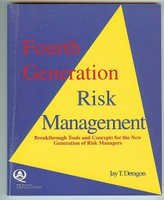
The Quality Insurance Congress was formed in 1993 to create a forum for the system of insurance and its customers to facilitate change that would improve customer satisfaction. Although each segment of the insurance delivery system had recognized the need to change the industry and develop methods to increase quality and customer service, they came to realize that each of them is dependent on the other in developing improved products and services. If they wanted to raise quality, they would have to work together. This led to the formation of the QIC, an organization uniting the insurance system with the customer.
The QIC wanted to improve the processes by which we provide insurance, the products that we offer, the services that we render, and in all of these areas, maintain a level of quality that meets or exceeds customer expectations.
What are all of the components of the insurance industry? Buying insurance is not just an exchange between customers and agents. The process includes many other players that are in the background but who nevertheless impact how the consumer ultimately feels about his/her purchase of insurance. These background components include, but are not restricted to, regulatory agencies, insurance companies, reinsurance companies, suppliers, brokers, agents, underwriters, customer service reps, marketing reps, etc. How do we inspire a common goal toward quality in all of these people? The mission of the QIC involves four areas.
The first is, on a continuing basis, to identify and develop a common measurement of customer expectations and satisfaction. What makes a satisfied customer? What does the customer expect? How can we, as an industry, meet or surpass those customer expectations? Secondly, to develop a common understanding of what quality really is and its economic impact among all facets of the industry. Next, so that no one is at odds with the other, to promote cooperation and continued education among all components of the process. We need to educate ourselves as well as the consumer. And finally, encourage management to implement these changes so that the goal is met for continuous improvement of the processes, the services and the products.
QIC members had QIC Resource center to use as an information source. The center provided QIC members with educational and reference materials relating to educational opportunities, information on industry associations, calendar of industry events, resources for specific subjects and services, proven management techniques, and new customer topics. More plans are being made to expand the resource services, and this is an area where the membership of QIC could provide invaluable resources.
Jay Deragon, executive director for QIC, believed that members benefit greatly by joining the QIC in its efforts to create and maintain quality within the insurance industry. In many areas, member companies were able to turn to the QIC to provide solutions rather than turning to an outside consultant or spending valuable staff time looking for solutions. The QIC had spent time to research many issues pertaining to quality within our industry. He also believes that the companies who become members of the QIC will have an impact on creating the change that should occur within the industry.
QIC's premise was that by developing a common voice among the various elements of the industry, more could be accomplished as QIC works toward active change. The QIC was shut down in 1996 and its efforts transferred to RIMS (Risk Insurance Management Society) in 1997. RIMS tried to forward the effort by publishing "Quality Improvement Process" for risk managers and their insurance partners. Since then no valid industry wide survey has been conducted to measure customer satisfaction with brokers, agents and carriers thus there is no basis from which to conclude whether anything has improved since the original "Quality Scorecard" was published in 1994.
Instead companies have pursued "quality initiatives" with numerous labels. The growing implementation of ISO 9000, which was a requirement for companies to sell into Europe, fostered a focus on process documentation to the neglect of process improvement, customer focus, and strategic leadership. * Reengineering - the wholesale change of large processes - quickly turned into a way to eliminate large numbers of employees. This and other means of "downsizing" meant that many companies lost their "corporate memory" as well as the loyalty of employees. * Other new managerial frameworks such as employee empowerment (promoted by Stephen Covey) and the Learning Organization (promoted by Peter Senge) were erroneously seen as competing with "Quality" rather than as complementary to it. Different departments or divisions chose and promoted different frameworks. Employees would say, "If this is Tuesday, I must be empowered. If it's Thursday, I should be using TQM." No one did the hard work of integrating them. Also, the traditional U.S. desire for "newness," and a "quick fix" meant that the "Quality Management Philosophy" inevitably and quickly became an old wave of management theory.
So it has been 13 years since the Quality Insurance Congress was formed. 12 years since it first customer satisfaction survey results were released. The initial survey results and subsequent survey results from 1995 - 1996 showed no improvement in customer satisfaction and the overall industry rated in the lowest quantrant of other industries customer satisfaction levels. So with all the supposed "improvement initiatives" subsequently started by the industry how would one know if anything has improved without having appropriate customer satisfaction data availalbe for puiblic viewing.?
In future publications we will examine other insurance industry efforts to improve. What has actually made improvement vs. what is nothing more than a label and another initiative for employees to carry out without a complete commitment from top management.
 In my book titled "Fourth Generation Risk Management", published in 1996, a set of predictions concerning risk management practices and the insurance industry were made based on observations at that time. Below are the predictions. Lets see how far the industry has come to fulfilling predictions of ten years ago.
In my book titled "Fourth Generation Risk Management", published in 1996, a set of predictions concerning risk management practices and the insurance industry were made based on observations at that time. Below are the predictions. Lets see how far the industry has come to fulfilling predictions of ten years ago.


